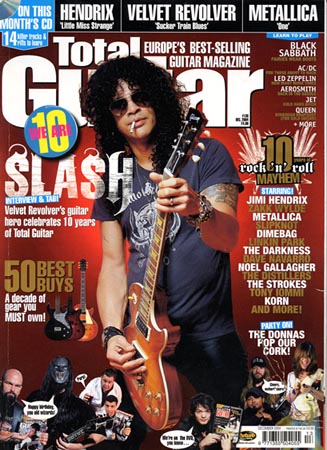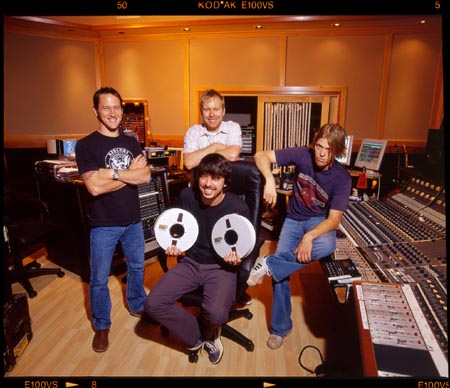
Above: Foo Fighters recording ‘In Your Honor’ on analogue tape. 606 Studio, LA 2005. Shot on Kodak E100VS film (Photo by JOHN McMURTRIE).
I have a flight case at home that is full of old camera gear. Nikon F90X’s, F100’s, various old lenses, Metz & Nikon Speedlights all sit tangled amongst old flash leads, filters and photographic items that I thought were necessary once but are no longer relevant. The case hasn’t been opened in probably 5 years. I also have darkroom trays and boxes of old film taking up space in my office. The film fridge which was originally a beer fridge is now a beer fridge again so progress has brought some good things. I just discovered that the Contax T3 sitting on my desk as a paperweight is one of the most sort after vintage 35mm cameras fetching upwards of £1200 – I was going to give it away!
It is incredible how quickly the world of film was replaced. All these artefacts of an era now gone litter my house like the fossilised remains of Pompeii. I distinctly remember the conversations when digital photography first appeared that it could never replace film. Never? Within 4 years it decimated the industry. Tore its head off and spat down its neck! Sounds harsh but believe me when it happened it was uglier than that! 150 years of progress since Fox Talbot discovered Salted paper mixed with Silver Nitrates would leave a latent image and the entire photographic industry as we knew it was washed away virtually overnight.
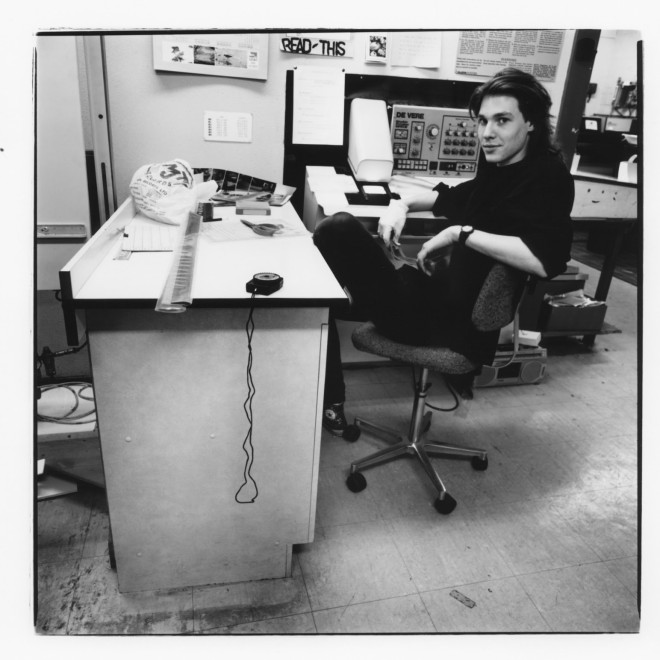
Above: My first job in a Photographic Processing lab, 1990 (photo by Stephen Judkins).
Don’t get me wrong. I am not a luddite. This isn’t the romantic babbling of someone longing for the past. I am hopelessly in love with digital photography. I embraced it way before digital cameras were a viable option. I had several film scanners and celebrated the idea of scanning, editing and delivering from your desktop. The quality today is exceptional. The detail, resolution and overall satisfaction I have from photography makes me happier than I ever was when shooting film. But progress has its disadvantages too.
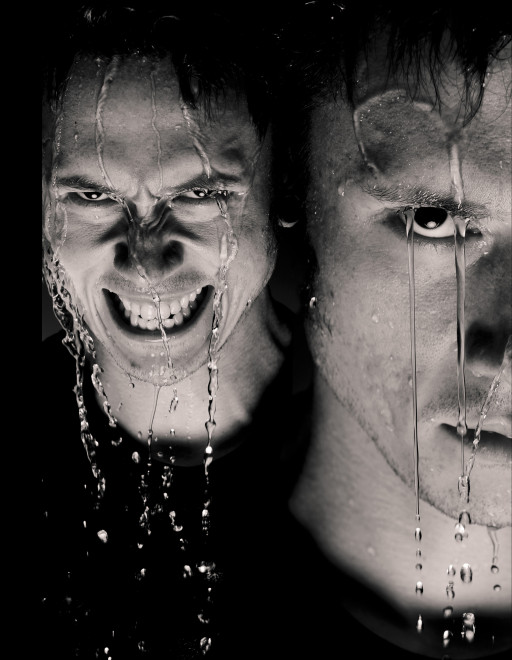
Back in 1998 I could see digital was the future. I was the Photographic Advisor at Nikon UK when the D1 was launched. A camera so ergonomically designed you would have never guessed it was digital – especially if you compared it to the periscope pig of a beast Kodak had developed. At first digital photography was for the Newspaper press core. They didn’t need phenomenal shadow detail or massive resolution. They needed convenience, speed and reasonable quality to hit the front pages fast. The D1 delivered on all of this and was a game changer. Within days you had press photographers fighting for parking space outside Nikon UK demanding to see this new tool of wonder. Once the camera was passed into their hands they would wander outside into the daylight like new messiahs reborn on the Richmond Rd. Their world as they knew it had just changed for the better. They no longer had to carry bags of film and processing kits in the boot of their cars. No more hair drying wet film and squeezing it into scanners for transmission. No more missing deadlines and not getting paid. Shoot download, upload. Job done! Deadlines could be met within minutes of a picture being taken. The Canon press core universally ditched their kit and jumped into bed with Nikon like their previous marriages meant nothing to them. Until Canon caught up and tempted them all back to their ex-wives.
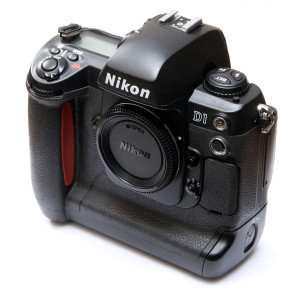
It was fun to watch at the time but for me that is all I did, watched. I had tested the camera before it’s launch and it really wasn’t that good. It was terrible above 800 ISO and the resolution was way too low for magazine work. I was shooting for Metal Hammer, Total Guitar, Classic Rock, Q magazine and NME at the time and most of my portrait work was shot on a Mamiya RZ 67. These were mostly glossy magazines publishing at 300 dpi and their standards were much higher.
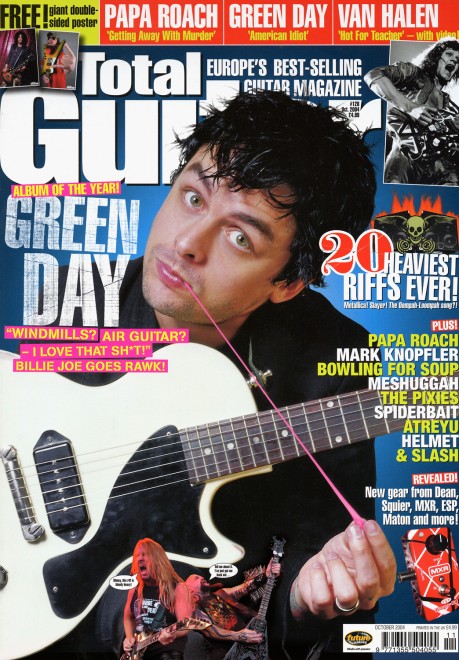
It wasn’t until 2006 when the D2x was launched I reluctantly became a ‘digital photographer and packed my 35mm Nikon F90X Pro and F100 cameras away in a flight case for safe keeping. I was forced into this decision because the month before I had shot a front cover and spent over £600 on film, process and printing which was un-recoupable on expenses. The magazine refused to pay the costs and informed me that everyone was shooting digital now. Everyone? Well nearly everyone. But digital still wasn’t that great, it wasn’t better than film. Kodak and Fuji were producing the most beautiful transparency films in 35mm and 120 formats. Kodak VS (Vivid Saturation) was my portrait film of choice. Under expose by one stop and push process it a stop and you had colours and blacks that were like no other.
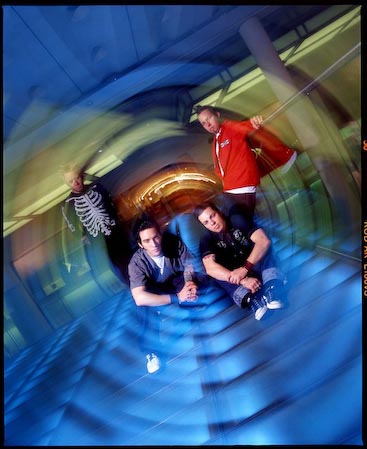
But suddenly I was forced to start shooting digitally. At first I approached each job in the same way I would with a film camera, except I was £100 richer by not having to pay for film or process. I hated the way highlights blew out on digital (I still do). With film the graduation is smoother and the effect is altogether more pleasant. Exposure control was widely different in the Nikon D2x than film. Different colours had mad effects on the metering and exposure - especially in concerts. My portrait lighting kit no longer lit to satisfaction, it just looked odd. Film used to love the way my flash danced onto its surface. Digital just looked harsh and brash like I no longer had any technique.  The social aspect associated with the film process also disappeared. I dated my now wife at the time in all the bars around Fulham and Chelsea whilst waiting for film to be cooked at the many labs in the area. My elation at looking at my results on the lightbox was probably exaggerated by the amount of alcohol consumed but I miss those days more than anything else. What I don’t miss is the thousands I used to spend. On an average year I would spend over £10,000 on film, process and an unverified amount on Oysters and drink in Bibendum’s off the Kings Rd. Nipping out to check on a clip test and continuing the boozing until the ‘work’ was complete.
I now sit in an office at home and ‘process’ my RAW files with enthusiasm but with so many distractions it takes longer than it would to process several rolls of film. The romance in my marriage and in the photographic process isn’t what it was thanks to the evolution of digital. The processing labs in Fulham are mostly gone now but Bibendum’s is still there and so is my lovely wife thankfully!
